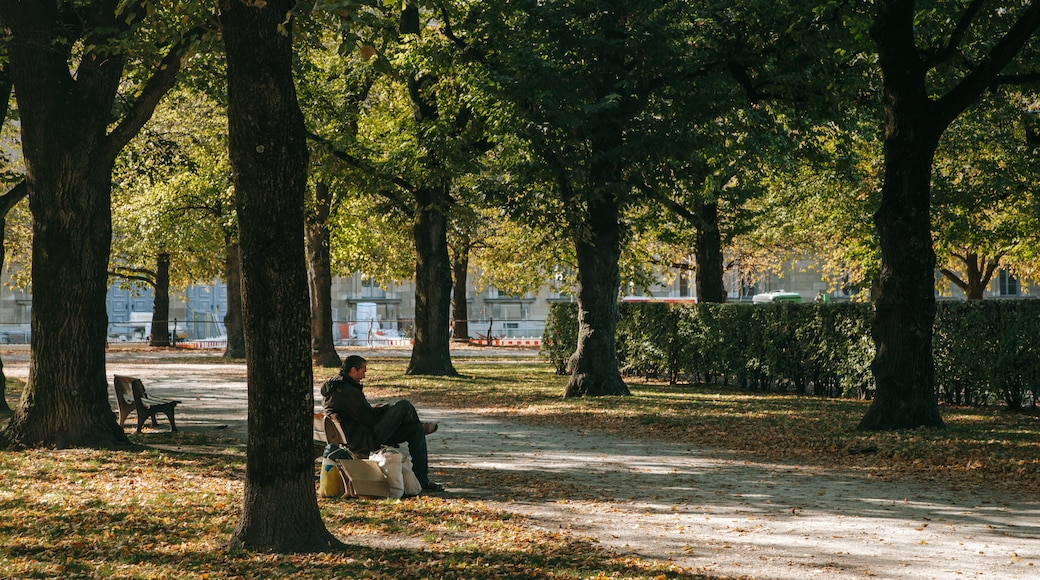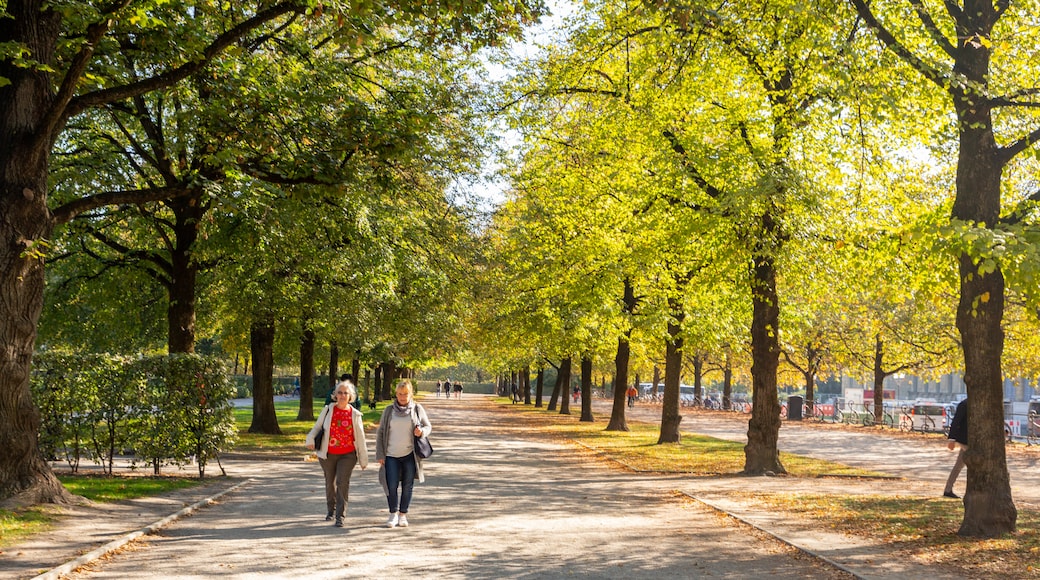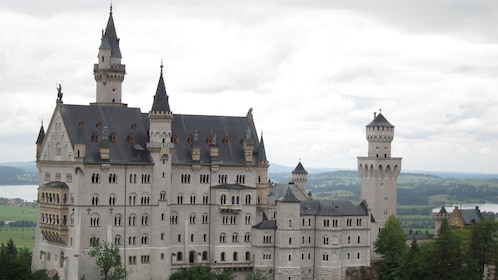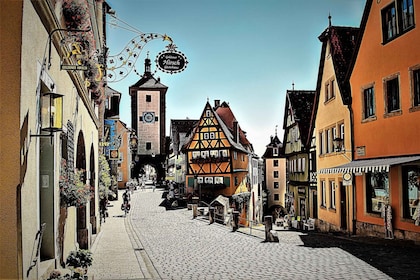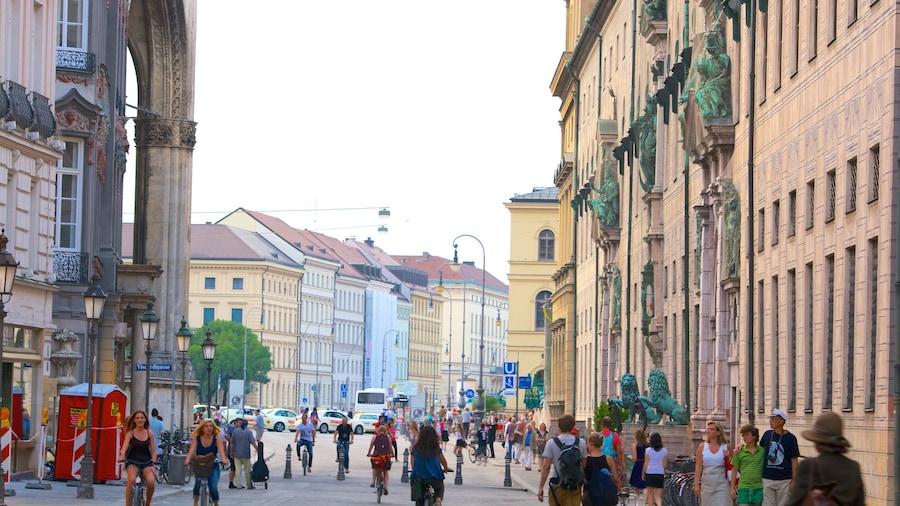What was once a court garden for the upper-class family living in the Residenz is now a relaxing space for students, families and those who want to escape the urban rush.
Munich’s Hofgarten (Court Garden) was commissioned in 1613 under the rule of Maximilian I. Its Renaissance style design was greatly damaged during World War II, but a faithful reconstruction of its previous design has seen it largely returned to its former glory.
The central feature of the garden is its pavilion. Installed in 1615, this icon has survived the many changes to the park’s landscape. Visit to spot tributes to the Roman goddess Diana, who was the caretaker of forests and wild animals. On the top of the pavilion, the Tellus Bavarica provides a sparkling centrepiece. This bronze figure is a replica of the original “Bavaria Statue”, a 16th-century monument of the female personification of Bavaria.
Walk the outskirts of the garden to see prominent buildings like the Residenz and the domed Bavarian State Chancellery. To the west and north of the garden, wander arcades and browse expressive murals that depict the lives of the famed Wittelsbach family.
Delight in the garden’s pretty 16th-century water features. Fountains spray water vapour alongside manicured hedges, flowerbeds and rows of tall trees that divide the garden into its distinct sections. Benches and mowed lawns make great places to just sit and catch your breath. Watch groups of students who walk these gardens to unwind after studying at the nearby Ludwig-Maximilians University.
In sunny weather, take a seat at the Café Tambosi. Join locals who sip Aperol spritz and other cool drinks at the outdoor tables surrounded by the garden’s beauty. Sometimes, you’ll see impromptu bocce tournaments held on the Hoftgarten’s gravel pathways. Stop often to listen to street musicians, whose classical renditions create a whimsical atmosphere throughout the park.
Get to the Hofgarten on foot from the city. Its main entry point is at the Odeonsplatz, where there is a U-Bahn (subway) stop. Use short pathways to get between the Hofgarten and the nearby English Garden.

